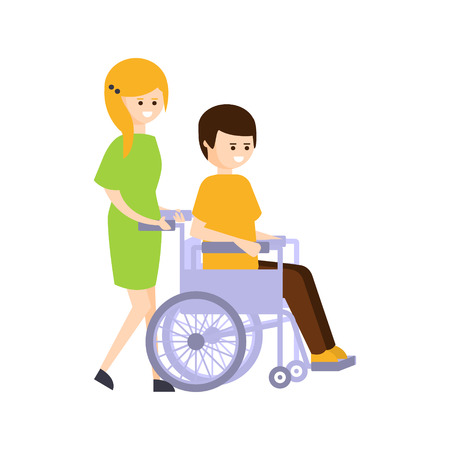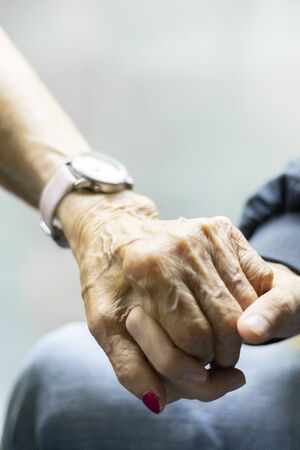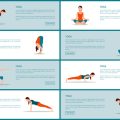Overview of Manual Therapy in the American Outpatient Setting
Manual therapy is a hands-on approach commonly used by physical therapists in the United States to help people recover from lower extremity issues, especially those affecting the hip, knee, and ankle. In American outpatient clinics, manual therapy is guided by patient-centered care and evidence-based practice. Therapists work closely with patients to understand their unique needs, daily activities, and personal goals, making sure every treatment plan is tailored for the best outcome.
Principles of Manual Therapy for Lower Extremities
Physical therapists use manual therapy techniques to reduce pain, improve movement, and restore function in the hip, knee, and ankle. The main principles include:
- Pain Relief: Using gentle joint mobilization or soft tissue techniques to decrease discomfort.
- Improving Mobility: Helping joints and muscles move more freely.
- Restoring Function: Enabling patients to return to daily activities or sports without limitations.
- Individualized Care: Creating treatment plans based on each patient’s goals and lifestyle.
- Evidence-Based Decisions: Applying the latest research to choose safe and effective treatments.
Common Manual Therapy Techniques Used in U.S. Clinics
| Technique | Description | Main Goals |
|---|---|---|
| Joint Mobilization | Gentle movements of the joint by hand | Pain relief, increased mobility |
| Soft Tissue Mobilization | Massage or pressure applied to muscles and fascia | Reduce muscle tightness, improve circulation |
| Myofascial Release | Sustained pressure on tight areas of connective tissue (fascia) | Pain reduction, improved flexibility |
| Manual Stretching | Therapist-assisted stretching of muscles and tendons | Increased range of motion, decreased stiffness |
| Mulligan Techniques | Mobilizations with active movement by patient under therapist guidance | Pain-free movement restoration, functional improvement |
The Patient-Centered Approach in American Clinics
In U.S. outpatient settings, manual therapy goes beyond just treating the injury. Therapists take time to listen to patients’ stories—how pain affects their work, family life, hobbies, and overall well-being. Shared decision-making is a key part of this process; patients are encouraged to ask questions and participate actively in their recovery journey. This partnership helps build trust and ensures that treatments fit each person’s specific needs.
The Role of Evidence-Based Practice
American physical therapists rely on up-to-date clinical guidelines and scientific studies when choosing manual therapy techniques. They continually assess progress using standardized outcome measures so they can adjust treatments if needed. This combination of professional expertise, research evidence, and individual preferences leads to safer and more effective results for people with hip, knee, and ankle problems.
2. Hip Assessment and Manual Treatment Techniques
Understanding Common Hip Conditions in the American Clinic
The hip joint plays a major role in everyday movements, from walking to running and even standing. In American clinics, some of the most common hip issues include osteoarthritis, labral tears, muscle strains, and bursitis. Proper assessment is key before any hands-on treatment can begin.
Assessment Strategies for Hip Conditions
| Condition | Key Symptoms | Common Assessment Methods |
|---|---|---|
| Osteoarthritis | Pain, stiffness, reduced range of motion | Gait observation, range of motion testing, palpation for tenderness |
| Labral Tear | Clicking, locking, deep groin pain | FABER/FADIR tests, movement analysis, patient history |
| Bursitis | Lateral hip pain, tenderness over greater trochanter | Palpation, resisted abduction, Ober’s test |
| Muscle Strains | Soreness with movement or palpation | Strength testing, palpation of muscle bellies, flexibility tests |
Manual Therapy Approaches for the Hip
After a thorough assessment, manual therapy can address both pain and mobility issues. Here are several hands-on techniques commonly used in American clinics:
Joint Mobilizations
- Posterior Glide: Helps improve hip flexion; often used for athletes or patients with limited squat ability.
- Lateral Distraction: Reduces joint compression and relieves pain during weight-bearing activities.
- Inferior Glide: Supports increased hip abduction and general mobility.
Soft Tissue Techniques
- Myofascial Release: Targets tight gluteal muscles or iliotibial band tension.
- Trigger Point Therapy: Applied to tender spots in the piriformis or deep rotators to decrease referred pain.
- Cupping or Instrument-Assisted Soft Tissue Mobilization (IASTM): Used for chronic tissue restrictions common in runners or older adults.
Integrating Manual Therapy with Functional Movement Patterns
A key focus in American physical therapy is blending manual therapy with movements that mirror daily life. For example:
- Mobilize-Then-Move Approach: After improving joint mobility with hands-on work, have the patient practice sit-to-stand drills or step-ups.
- Active Assisted Movements: Guide the patient through gentle squats or lunges while supporting their hip as needed.
- Pain-Free Range Strengthening: Encourage exercises like bridges or clamshells right after soft tissue techniques to reinforce gains in mobility.
Sample Integration Table: Manual Technique + Functional Exercise Pairings
| manual technique | suitable exercise pairing |
|---|---|
| Lateral Distraction Mobilization | Lateral step-downs or side-stepping drills |
| Piriformis Trigger Point Release | Straight leg raises or glute bridges |
| Iliotibial Band Myofascial Release | Banded side walks or single-leg squats |
This practical approach combines evidence-based manual therapy with functional movements to help patients regain comfort and confidence as they return to their favorite activities.

3. Knee Manual Therapy: Evidence-Based Approaches
Understanding Common Knee Pathologies in the U.S.
The knee is one of the most commonly injured joints, especially among active Americans and older adults. The most frequent pathologies seen in American clinics include:
| Knee Pathology | Description | Common Causes |
|---|---|---|
| Osteoarthritis (OA) | Degeneration of joint cartilage and underlying bone | Aging, repetitive stress, obesity |
| Patellofemoral Pain Syndrome (PFPS) | Pain around or behind the kneecap | Overuse, misalignment, muscle imbalance |
| Meniscal Injuries | Tears in the cartilage cushioning the knee joint | Twisting movements, sports injuries |
| Ligament Sprains (ACL, MCL) | Injury to stabilizing ligaments of the knee | Athletic activities, sudden stops or changes in direction |
Hands-On Manual Therapy Techniques for the Knee
Manual therapy is a core part of American physical therapy care for knee issues. The following techniques are widely used by clinicians across the United States:
- Joint Mobilizations: Gentle gliding movements applied to the tibiofemoral and patellofemoral joints help restore motion and decrease pain. Grades I-II mobilizations are used for pain relief, while Grades III-IV focus on increasing range of motion.
- Soft Tissue Mobilization: Hands-on techniques targeting tight quadriceps, hamstrings, and IT band tissues reduce tension and improve flexibility. Myofascial release and cross-friction massage are common choices.
- Patellar Mobilizations: Lateral and medial glides, as well as superior-inferior mobilizations, help normalize patella movement and relieve anterior knee pain.
- Mulligan Techniques: Mobilization with movement (MWM) combines therapist-applied glides with patient’s active movement to restore function comfortably.
- Manual Stretching: Direct stretching of restricted muscles such as quadriceps, hamstrings, and calf muscles enhances flexibility and supports normal joint mechanics.
Table: Common Manual Therapy Interventions for Knee Pain
| Technique | Main Purpose | When Its Used |
|---|---|---|
| Tibiofemoral Joint Mobilization | Pain reduction, improved ROM (range of motion) | Knee stiffness, OA, post-surgery rehab |
| Patellar Mobilization | Pain relief, patella tracking improvement | PFPS, after injury or surgery |
| Soft Tissue Mobilization/Myofascial Release | Tension reduction, increased flexibility | Tight muscles post-injury or overuse conditions |
| Mulligans MWM for the Knee | Painless restoration of movement during activity | Mild to moderate restrictions in ROM or function |
| Manual Stretching Techniques | Increase muscle length & flexibility | Stiffness due to immobilization or injury recovery phase |
Combining Manual Therapy with Therapeutic Exercise: Best Practices in American Clinics
The gold standard in U.S. physical therapy isn’t just hands-on care—its integrating manual therapy with personalized exercise programs. According to current American clinical guidelines, here’s how therapists maximize outcomes for knee rehabilitation:
- Pain Control First: Early sessions often focus on manual techniques to control pain and swelling before progressing to more challenging exercises.
- Progressive Strengthening: Once pain is under control, targeted strengthening of the quadriceps, hamstrings, hip abductors, and calf muscles is introduced through functional exercises like squats, step-ups, or resistance bands.
- BALANCE AND PROPRIOCEPTION: As mobility improves, balance training (such as single-leg stands or use of balance pads) helps prevent reinjury—important for athletes and older adults alike.
- PATIENT EDUCATION: Therapists provide practical advice on activity modification, ergonomic adjustments at work or home (like proper sitting posture), and guidance on safe return to sports or daily life.
Knee Rehab Approach: Step-by-Step Overview in the U.S.
| Treatment Phase | Main Focus |
|---|---|
| Pain & Inflammation | Manual therapy (mobilizations/massage), gentle ROM exercises |
| Restoration of Motion | Manual stretching/mobilization, begin basic strengthening |
| Strengthening & Function | Add resistance exercises; incorporate balance/proprioception drills |
| Return to Activity | Advanced functional exercises; patient-specific sport/work tasks |
The American Physical Therapy Experience for Knee Care
Knee manual therapy in the United States emphasizes not only hands-on skill but also teamwork between therapist and patient. By combining evidence-based manual interventions with progressive exercise and clear communication, clinics across America strive to help people get back to their favorite activities safely and confidently.
4. Ankle and Foot Manual Therapy in Clinical Practice
Assessment of the Ankle and Foot
When assessing the ankle and foot in a typical American clinic, it’s important to consider both mobility and stability. Common patient complaints include pain after running, difficulty walking, or issues following an ankle sprain. A thorough assessment includes:
- Observation: Look for swelling, bruising, deformity, or abnormal gait patterns.
- Palpation: Check for tenderness over bones, ligaments, and tendons.
- Range of Motion (ROM): Test dorsiflexion, plantarflexion, inversion, and eversion.
- Strength Testing: Assess muscle strength and compare sides.
- Special Tests: Use tests like the anterior drawer or talar tilt to check for ligament stability.
Treatment Approaches: Joint Mobilizations and Myofascial Release
Manual therapy for the ankle and foot can make a big difference in restoring function. Here are some common techniques used by physical therapists in the U.S.:
| Treatment Technique | Description | Clinical Application |
|---|---|---|
| Ankle Joint Mobilizations | Gentle gliding movements applied to the talocrural and subtalar joints. | Improves mobility after sprains or surgery; helps with dorsiflexion needed for walking. |
| MTP Joint Mobilization | Mobilizing the metatarsophalangeal joints to improve toe movement. | Aids push-off during gait; useful for runners or post-injury stiffness. |
| Myofascial Release | Hands-on soft tissue work on calf muscles, plantar fascia, and intrinsic foot muscles. | Reduces tightness and improves flexibility; helpful for plantar fasciitis or Achilles issues. |
Clinical Pearls for Optimizing Gait and Function
- Shoe Selection: Recommend supportive footwear that matches the patient’s activity level—running shoes for runners, sturdy sneakers for daily walkers.
- Gait Training: Incorporate balance exercises and functional retraining like heel-to-toe walking or stair navigation.
- Pain Management: Ice, taping techniques (like low-dye taping), and gradual return to activity are frequently used in American clinics.
- Home Exercise Program: Teach patients easy stretches (like calf stretches against the wall) and strengthening exercises (such as towel scrunches for intrinsic foot muscles).
Cultural Considerations in U.S. Clinical Practice
In the United States, patient education is key. Therapists often use simple diagrams or handouts to explain anatomy and exercises. Patients are encouraged to ask questions and participate actively in their rehab process. Communication is open and friendly—therapists might say “Let’s work together to get you back on your feet!” emphasizing teamwork and empowerment.
5. Integrating Manual Therapy into Comprehensive Lower Extremity Rehabilitation
Manual Therapy as Part of a Multi-Modal Program
In American clinics, manual therapy for the hip, knee, and ankle is rarely used in isolation. Instead, its integrated into broader rehabilitation plans to enhance outcomes and fit the unique needs of each patient. This means combining hands-on techniques with other evidence-based interventions such as therapeutic exercise, modalities like heat or ice, and functional training. The goal is to address not just pain and mobility but also long-term function and independence.
Strategies for Effective Integration
1. Patient Education: Empowerment Through Knowledge
Educating patients about their condition and the role of manual therapy is crucial. In the U.S., patients appreciate understanding how treatments work and what they can do at home. Therapists often use easy-to-understand language, visuals, or handouts to explain anatomy, injury mechanisms, and expected outcomes. This helps build trust and encourages active participation in recovery.
2. Promoting Self-Management
American healthcare emphasizes patient autonomy. After manual therapy sessions, therapists typically teach self-mobilization techniques, stretches, or strengthening exercises that patients can perform independently. This approach supports continuity of care between clinic visits and fosters responsibility for one’s health.
| Manual Therapy Technique | Home Exercise Example | Patient Education Tip |
|---|---|---|
| Ankle joint mobilization | Ankle circles or resistance band exercises | “Repeat these movements daily to keep your ankle flexible.” |
| Knee soft tissue release | Quad sets or gentle heel slides | “These will help maintain knee motion between sessions.” |
| Hip mobilization | Hip bridges or clamshells | “Strengthening surrounding muscles supports joint health.” |
3. Interprofessional Collaboration
The American clinic often uses a team-based approach. Physical therapists collaborate with physicians, occupational therapists, athletic trainers, and sometimes social workers to create comprehensive care plans. Regular communication ensures manual therapy is safely coordinated with medications, surgical protocols, or other therapies.
Adapting to the American Healthcare Environment
The U.S. healthcare system is complex, with insurance requirements and time constraints influencing care delivery. Therapists must document progress clearly and justify manual therapy within treatment plans for reimbursement purposes. Flexibility is key—therapists tailor programs based on individual goals, insurance coverage, and available resources.
Key Points for Successful Integration:
- Combine manual therapy with exercises for better results.
- Educate patients using simple explanations and practical tips.
- Encourage home programs for ongoing self-care.
- Work closely with other professionals for holistic management.
- Adapt strategies to fit clinical guidelines and patient needs in the American context.
This approach ensures manual therapy remains a valuable part of lower extremity rehabilitation while aligning with both best practices and the realities of American healthcare.


